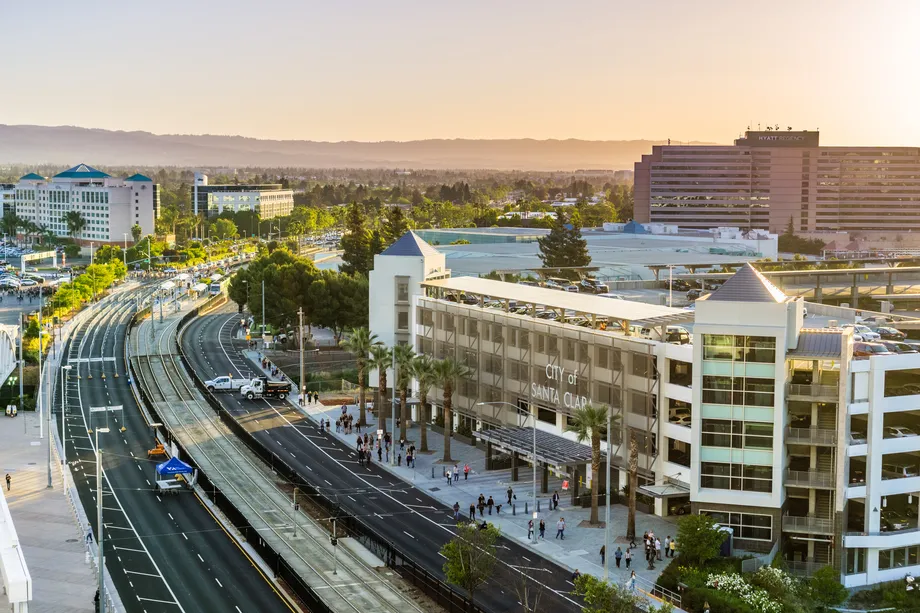Mathew Reed, Director of Policy at SV@Home, submitted a letter in response to the City of Santa Clara’s Housing Element, the state-mandated 8-year plan to address the housing needs of all residents in the community. He recommended changes to Action 13 of the housing element, a series of measures intended to prevent displacement of vulnerable residents from the city, to clarify and strengthen the City’s commitment. Planning commissioners unanimously approved a resolution to recommend that the City Council adopt the updated housing element for the 2023-2031 cycle, with the suggested revisions made by Reed. The SV@Home Housing Element team continues to engage with cities across the county, providing recommendations and support for strong, effective housing elements.
By Erika Towne | Silicon Valley Voice | POSTED 01:50 PM, January 30, 2023
The Santa Clara Planning Commission tackled the City’s housing element update during its Jan. 26 meeting and pushed it to the City Council for approval.
Every eight years, the City must provide a revised housing element and submit it to the state’s Department of Housing & Community Development (HCD) for approval.
The housing element outlines how many new units of housing a city plans to create over the next eight years. The plan must include moderate-income, low-income and very-low-income housing.
All cities in California must submit new housing element updates to HCD by Jan. 31, 2023. Santa Clara’s City Council is expected to take up the issue on Jan. 31.
This is the City’s sixth Regional Housing Needs Allocation (RHNA) cycle. Santa Clara believes it will add 11,632 new units over the next eight years. The breakdown includes 5,126 above-moderate-income units, 1,981 moderate-income units, 1,653 low-income units and 2,872 very-low-income units.
The plan also includes a buffer (as required by the state) to ensure that the RHNA is met.
The biggest difference between Santa Clara’s sixth RHNA cycle and its fifth is that the sixth cycle addresses more affordability goals. City staff says 80% to 120% Area Median Income (AMI) is no longer affordable enough for many Santa Clara residents.
Santa Clara expects the biggest development areas over the next eight years to be Tasman East, Patrick Henry Drive and Greystar developments.
The implementation of AB2011 and SB6 in July 2023 are expected to allow for additional housing in industrial areas.
The City spent several years of outreach on this housing element update. The top pieces of feedback were that Santa Clara should continue to prioritize homelessness as well as housing opportunities for seniors and persons with disabilities.
Mathew Reed, Director of Policy at Silicon Valley at Home submitted a letter in response to the housing element. He suggested changes to “Action 13” of the housing element to clarify some wording.
City staff told commissioners that it would support the proposed rewording of “Action 13” if commissioners deemed it necessary.
During public comment, Reed said that he appreciated the outreach City staff did during this sixth RHNA cycle.
“There are a lot of us in this City who are really vulnerable and are often invisible and I think staff has made an effort,” said Reed.
While commissioners appreciated the work by City staff, many were concerned that Santa Clara was not doing enough to become more affordable.
“What is the consequence of not meeting very low income?” asked Commissioner Yashraj Bhatnagar. “None. The consequence is there are people on the streets…We need to be more aggressive.”
Planning Commission Chair Priya Cherukuru suggested the City take a more “proactive” approach to affordable housing.
Meanwhile, Commissioner Mario Bouza expressed concern that kids who grew up in Santa Clara cannot afford to move back home.
The Housing Action Coalition wrote a letter opposing the housing element draft and submitted it to the City on Jan. 22, just hours before the Planning Commission was initially supposed to meet to discuss the draft.
The Housing Action Coalition also wrote a letter in November when the initial report was released and the City responded at that time.
In Sunday’s letter, it was argued that, among other things, some of the sites identified would not be available to redevelop, that the City “overestimated” density calculation and that sites were reused from the 2015-23 housing element.
Assistant City Attorney Xander Abbe responded, saying that in some cases, the Housing Action Coalition “misinterpreted” state law. In other instances, he says data was “cherry picked” to prove a point.
Abbe argued that Santa Clara’s history of development is sufficient evidence to disprove the arguments made in the letter.
“Don’t postpone action on the housing element based on this letter,” Abbe advised.
Ultimately, the Planning Commission unanimously recommended that the City Council adopt the addendum to the environmental impact report.
Commissioners also unanimously approved a resolution to recommend the City Council amend the General Plan by adopting an updated housing element for the 2023-2031 cycle, with the suggested revisions to “Action 13” made by Reed.
“It may sound like we have just quickly passed through this,” said Commissioner Lance Saleme after the vote. “I personally spent the last two days grinding through intense amounts of documents to make sure that I wasn’t voting arbitrarily on something. I think a great deal of effort has been made by all the commissioners here to come to a conscious and well considered decision.”
